
Richard Nathaniel Wright was an American author of novels, short stories, poems, and non-fiction. Much of his literature concerns racial themes, especially related to the plight of African Americans during the late 19th to mid 20th centuries suffering discrimination and violence. His best known works include the novella collection Uncle Tom's Children (1938), the novel Native Son (1940), and the memoir Black Boy (1945). Literary critics believe his work helped change race relations in the United States in the mid-20th century.

James Arthur Baldwin was an American writer and civil rights activist who garnered acclaim for his essays, novels, plays, and poems. His 1953 novel Go Tell It on the Mountain has been ranked among the best English-language novels. His 1955 essay collection Notes of a Native Son helped establish his reputation as a voice for human equality. Baldwin was a well-known public figure and orator, especially during the civil rights movement in the United States.
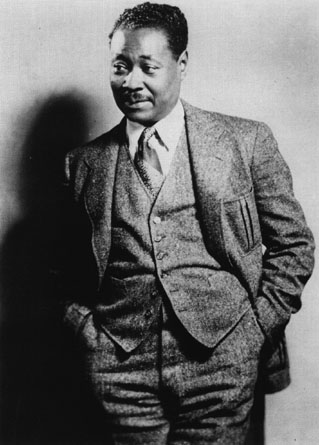
Festus Claudius "Claude" McKay OJ was a Jamaican-American writer and poet. He was a central figure in the Harlem Renaissance.
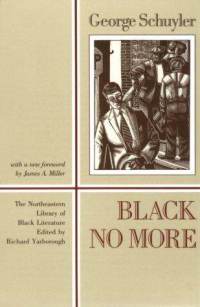
Black No More: Being an Account of the Strange and Wonderful Workings of Science in the Land of the Free, A.D. 1933-1940 is a 1931 Harlem Renaissance satire on American race relations by George S. Schuyler. In the novel, Schuyler targets both the Ku Klux Klan and NAACP in condemning the ways in which race functions as both an obsession and a commodity in early twentieth-century America. The central premise of the novel is that an African American scientist invents a process that can transform Black people into white people. Those who have internalized white racism, those who are tired of inferior opportunities socially and economically, and those who simply want to expand their sexual horizons, undergo the procedure. As the country "whitens", the economic importance of racial segregation in the South as a means of maintaining elite white economic and social status becomes increasingly apparent, as the South relies on Black labor through sharecropping.

Chester Bomar Himes was an American writer. His works, some of which have been filmed, include If He Hollers Let Him Go, published in 1945, and the Harlem Detective series of novels for which he is best known, set in the 1950s and early 1960s and featuring two black policemen called Grave Digger Jones and Coffin Ed Johnson. In 1958, Himes won France's Grand Prix de Littérature Policière.

If He Hollers Let Him Go is the first novel by American writer Chester Himes, published in 1945, about an African-American shipyard worker in Los Angeles during World War II. It earned him critical acclaim and was considered a "protest novel", in the tradition of Richard Wright.
African American literature is the body of literature produced in the United States by writers of African descent. It begins with the works of such late 18th-century writers as Phillis Wheatley. Before the high point of enslaved people narratives, African American literature was dominated by autobiographical spiritual narratives. The genre known as slave narratives in the 19th century were accounts by people who had generally escaped from slavery, about their journeys to freedom and ways they claimed their lives. The Harlem Renaissance of the 1920s was a great period of flowering in literature and the arts, influenced both by writers who came North in the Great Migration and those who were immigrants from Jamaica and other Caribbean islands. African American writers have been recognized by the highest awards, including the Nobel Prize given to Toni Morrison in 1993. Among the themes and issues explored in this literature are the role of African Americans within the larger American society, African American culture, racism, slavery, and social equality. African-American writing has tended to incorporate oral forms, such as spirituals, sermons, gospel music, blues, or rap.

Ourika is an 1823 novel by Claire de Duras, originally published anonymously.
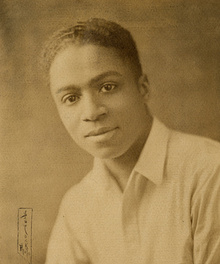
Rudolph John Chauncey Fisher was an American physician, radiologist, novelist, short story writer, dramatist, musician, and orator. His father was John Wesley Fisher, a clergyman, his mother was Glendora Williamson Fisher, and he had two siblings. Fisher married Jane Ryder, a school teacher from Washington, D.C. in 1925, and they had one son, Hugh, who was born in 1926 and was also nicknamed "The New Negro" as a tribute to the Harlem renaissance. Fisher had a successful career as an innovative doctor and author, who discussed the dynamics and relationships of Black and White people living in Harlem. This racial conflict was a central theme in many of his works.

A gravedigger is a cemetery worker who is responsible for digging a grave prior to a funeral service.

John Alfred Williams was an African American author, journalist, and academic. His novel The Man Who Cried I Am was a bestseller in 1967. Also a poet, he won an American Book Award for his 1998 collection Safari West.
The Harlem Detective series of novels by Chester Himes comprises nine hardboiled novels set in the 1950s and early 1960s:
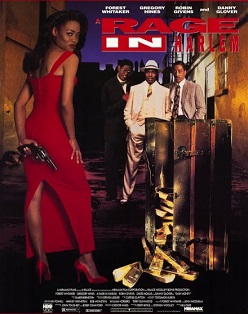
A Rage in Harlem is a 1991 American crime film directed by Bill Duke and loosely based on Chester Himes' novel A Rage in Harlem. The film stars Forest Whitaker, Danny Glover, Badja Djola, Robin Givens and Gregory Hines. Producer Stephen Woolley intended it to be a comedy film, and several reviewers have described it as such, but this categorization has been disputed by director Bill Duke.

Cotton Comes to Harlem is a 1970 American neo-noir action comedy film co-written and directed by Ossie Davis and starring Godfrey Cambridge, Raymond St. Jacques, and Redd Foxx. The film, later cited as an early example of the blaxploitation genre, is based on Chester Himes' novel of the same title. The opening theme, "Ain't Now But It's Gonna Be," was written by Ossie Davis and performed by Melba Moore. The film was one of the many black films that appeared in the 1970s and became overnight hits. It was followed two years later by the sequel Come Back, Charleston Blue.

Come Back, Charleston Blue is a 1972 American crime comedy film starring Godfrey Cambridge and Raymond St. Jacques, loosely based on Chester Himes' novel The Heat's On. It is a sequel to the 1970 film Cotton Comes to Harlem.

Cane is a 1923 novel by noted Harlem Renaissance author Jean Toomer. The novel is structured as a series of vignettes revolving around the origins and experiences of African Americans in the United States. The vignettes alternate in structure between narrative prose, poetry, and play-like passages of dialogue. As a result, the novel has been classified as a composite novel or as a short story cycle. Though some characters and situations recur between vignettes, the vignettes are mostly freestanding, tied to the other vignettes thematically and contextually more than through specific plot details.

Blaxploitation is an ethnic subgenre of the exploitation film that emerged in the United States during the early 1970s, when the combined momentum of the civil rights movement, the Black power movement, and the Black Panthers spurred black artists to reclaim power over their image, and institutions like UCLA to provide financial assistance for students of color to study filmmaking. This combined with Hollywood adopting a less restrictive rating system in 1968. The term, a portmanteau of the words "black" and "exploitation", was coined in August 1972 by Junius Griffin, the president of the Beverly Hills–Hollywood NAACP branch. He claimed the genre was "proliferating offenses" to the black community in its perpetuation of stereotypes often involved in crime. After the race films of the 1940s and 1960s, the genre emerged as one of the first in which black characters and communities were protagonists, rather than sidekicks, supportive characters, or victims of brutality. The genre's inception coincides with the rethinking of race relations in the 1970s.
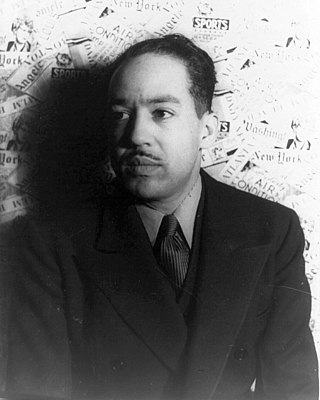
James Mercer Langston Hughes was an American poet, social activist, novelist, playwright, and columnist from Joplin, Missouri. One of the earliest innovators of the literary art form called jazz poetry, Hughes is best known as a leader of the Harlem Renaissance. He famously wrote about the period that "the Negro was in vogue", which was later paraphrased as "when Harlem was in vogue."

The Real Cool Killers is a hardboiled crime fiction novel written by Chester Himes. Published in 1959, it is the second book in the Grave Digger Jones & Coffin Ed Johnson Mysteries. The protagonists of the novel, Grave Digger Jones and Coffin Ed, are a pair of black detectives who patrol the dangerous slums of Harlem. The book was originally published in French under the title Il pleut des coups durs.

Cotton Comes to Harlem is a hardboiled crime fiction novel written by Chester Himes in 1965. It is the sixth and best known of the Harlem Detective series. It was later adapted into a film of the same name in 1970 starring Godfrey Cambridge, Raymond St. Jacques, and Redd Foxx.

















